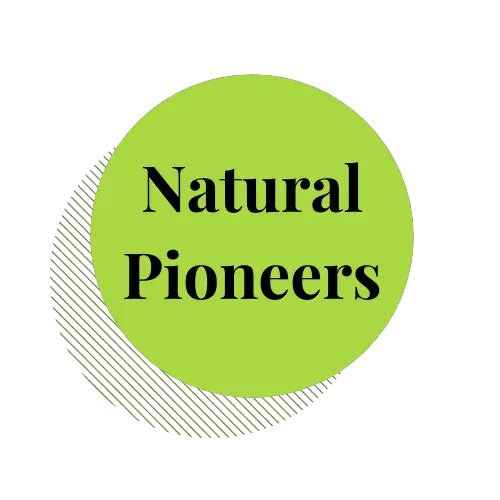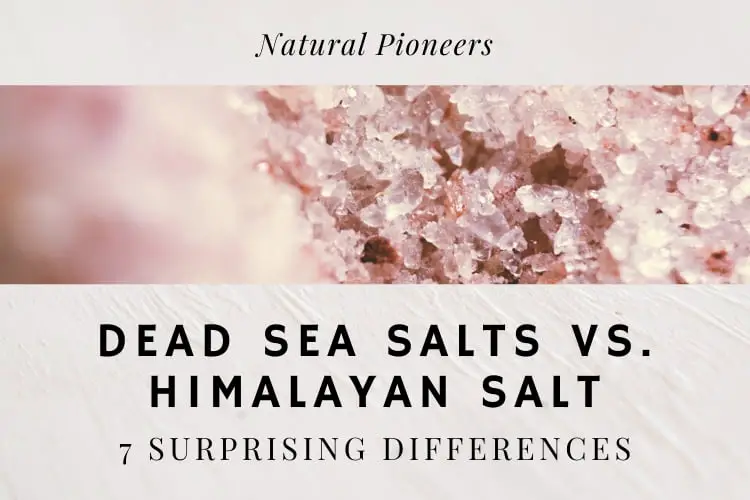
Minerals are essential for the human body. But when it comes to salt, the opinions are divided. While Himalayan salt and Dead Sea salts each come with major benefits, they are fundamentally different as well.
1. Himalayan Salt Is Edible, Dead Sea Salts Are Not
Himalayan salt is rock salt that gets extracted in a Salt Mine near the Himalayas. It is one of the oldest salt mines. Unlike Himalayan salt, Dead Sea salts are mainly used for topical treatments. Being made up of only 30% salt with a high percentage of other essential minerals, Dead Sea salts are not safe for consumption and taste quite bitter.
2. The Origin: Middle East Vs. South Asia
Himalayan salt gets extracted near the Himalaya mountrain range. The Khewra salt mine in Pakistan is one of the largest and oldest salt mines in the world. Dead Sea salt comes from the Dead Sea, a salt lake bordered by Jordan, Israel and Palestine.
3. They Look Different
Himalayan salt comes in many colors. Colors range from white and pink, to orange, and red. It’s impurities in some veins of salt that give Himalayan salt its colorful appearance. Unwashed Dead Sea salts have a dirty, brown color. Washed Dead Sea salts are white.
Curious about the effects of Dead Sea mud for blemished skin? Read more: Is Dead Sea Mud Good For Acne?
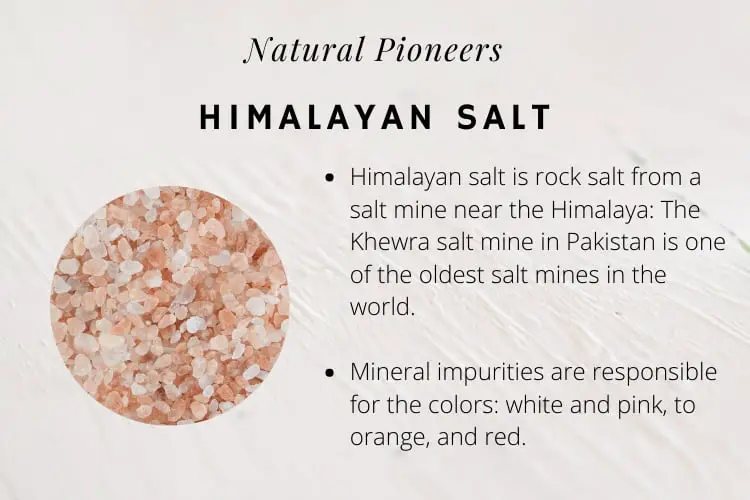
4. They Show A Different Mineral Composition
The edible Himalayan salt contains 84 natural minerals in total. It’s more natural and more nutritious than refined table salt. But remember, it’s not a significant source of minerals. When following the FDA’s recommendation of no more than 1 teaspoon of salt per day, we might only achieve about 1% of your daily magnesium through salt.
Inedible, Dead Sea salts are more than sodium. Dead Sea salts consist of a complex mineral composition including large amounts of magnesium, sodium, calcium, potassium, bromine, chlorine, and smaller amounts of sulfate and bicarbonate. Being made up of only 30% salt with a high percentage of other essential minerals, Dead Sea salts are not safe for consumption and taste quite bitter.
5. One’s A Healer, The Other’s Used As A Flavor
Himalayan salt is primarily used as a food additive. You can also find it in decorative salt lamps. Himalayan salt’s colorful appearance is perfect for use as a finishing salt where it can enhance the flavor of dishes and remain visible.
Does Himalayan salt taste different? You’re likely to detect a noticeable difference in flavor compared to table salt. The contained minerals help dull the sharpness of pure sodium chloride. Many people prefer the flavor of Himalayan salt over other types.
Dead Sea minerals are used in Dead Sea mud (in masks or mud packages) or Dead Sea bath salt. Numerous studies revealed their healing powers for skin diseases, arthritis, and more. Make sure you use 100% Dead Sea salts or mud with no added ingredients to achieve the same effects as seen in studies.
Curious about the best natural bath additives? Read more: What Is A Good Natural Bath Salt | Natural Bath Additives
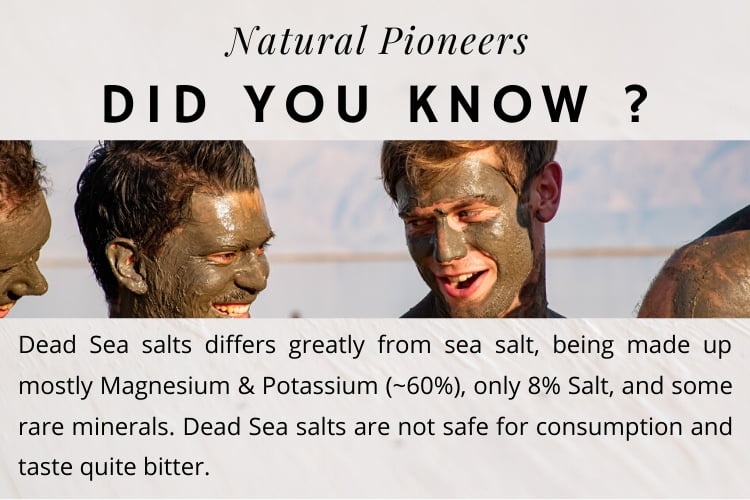
6. Dead Sea Salts Show Vast Benefits
Swapping table salt for Himalayan salt seems like a great idea: Studies prove that consumption of natural salt induces less hypertension compared to refined salt. [1] Soaking in a bath with added Himalayan salt has healing properties. One study done with about 1.5 cups of salt per bathtub resulted in complete healing of all skin lesions and was more effective than other treatments. [2]
So much about Himalayan salt. Let’s look at the long list of benefits in Dead Sea salts:
- Dead Sea salt baths at home reduce skin breakouts by up to 35%. Dead Sea salts have a healing effect and reduce inflammation, skin roughness, and redness. [3]; [4]; [5]
- Dead Sea mineral baths restore moisture and enhance skin hydration. They contain a natural moisturizing factor that can improve the look of acne damaged skin. [6]
- Dead Sea baths reduce aging sings on human skin. Dead Sea minerals have a rejuvenating effect on your skin. [7]
- In rheumatoid arthritis patients, Dead Sea mud packs significantly improve morning stiffness, hand-grip strength and activities of daily living. [8]
- Dead Sea mud packs reduce pain severity in patients with chronic low back pain. [9]
- Dead Sea mud accelerates the wound healing process. [10]
- In patients with rheumatoid arthritis, daily baths in Dead Sea salts significantly improve morning stiffness, fifteen-meter walk time, hand-grip strength and circumference of joints. [11]
- Studies show Dead Sea spa therapy modalities help with psoriasis and psoriatic arthritis. [12]
- Baths in the Dead Sea help with Fibromyalgia. Studies show a relief of symptoms (pain, fatigue, stiffness, and anxiety) and reduced frequency of symptoms (headache, sleep problems, and subjective joint swelling). [13]
- In patients with knee osteoarthritis, balneotherapy helps with pain, physical function and walking speed. [14]
- Intermittent balneotherapy in the Dead Sea helps with knee osteoarthritis. Results lasted up to 6 months. [15]
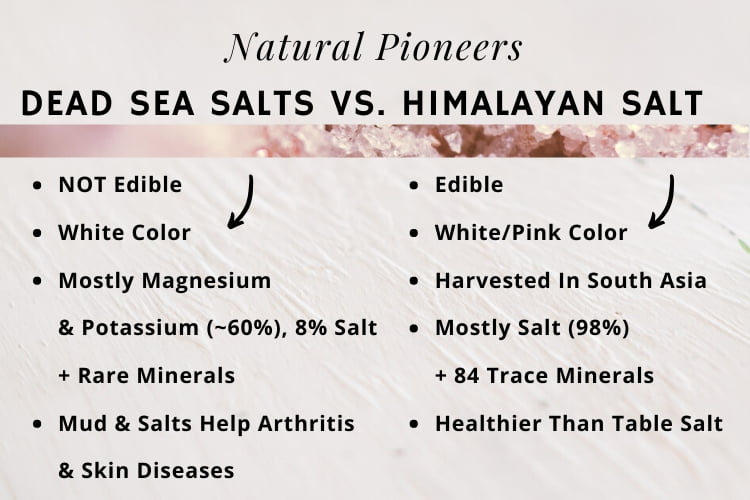
7. The Bath Recipe Is – You Guessed It – Different
How To Do A Salt Bath:
- Start running warm water into a clean bathtub. Be sure it’s not too hot as hot water can aggravate inflamed skin and draw moisture from your skin.
- Choose your salt!
- Dead Sea salts: add 1/2 cup
- Himalayan salt: add 1 – 1.5 cups
Under the running tap and mix with your hand until completely dissolved. Dead Sea salts will leave a mud film on the tub – it wipes off easily. Enjoy!
You want to make your own bath salt? Read more: How To Make Colloidal Oatmeal | Homemade Recipe & Benefits
